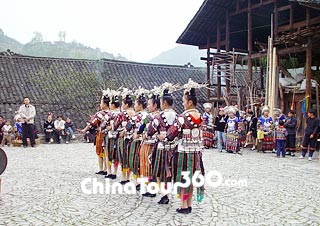 Langdeshang Miao Village
Langdeshang Miao Village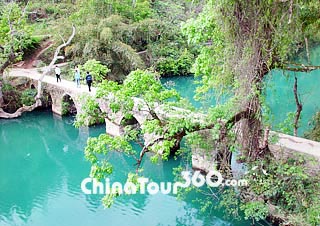 Xiaoqikong Scenic Area
Xiaoqikong Scenic Area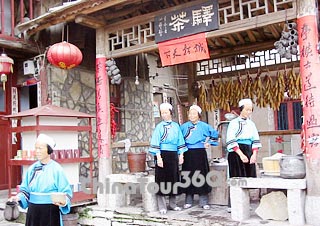 Tianlong Tunbu, Anshun
Tianlong Tunbu, Anshun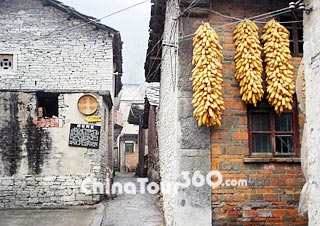 Yunshantun Village, Anshun
Yunshantun Village, Anshun Sunday Market, Kaili
Sunday Market, Kaili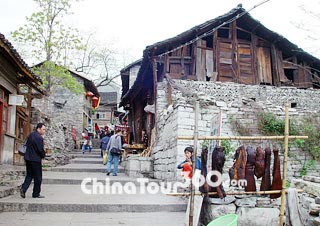 Qingyan Ancient Town, Guiyang
Qingyan Ancient Town, Guiyang
Guizhou Province, known as Qian for short, is a province on the eastern section of the Yunnan-Guizhou Plateau in southwestern China. Until the Ming Dynasty (1368 - 1644), Guizhou came under Chinese domination during which it was made a province. This prompted mass migration from Sichuan, Hunan and its surrounding provinces into Guizhou.
Guizhou covers an area of 170,000 square kilometers (65,637 square miles), adjoining Sichuan and Chongqing Municipality to the north, Yunnan to the west, Guangxi to the south and Hunan to the east. Overall Guizhou is a mountainous province lying over 1,100 meters (3,609 feet) above the sea level. It is hillier in the west while the eastern and southern portions are relatively flat. The western part of the province forms part of the Yunnan-Guizhou Plateau.
There are 9 cities including 3 prefecture-level cities: Guiyang, Zunyi and Liupanshui; 3 prefectures: Anshun, Tongren and Bijie; and 3 autonomous prefectures of their minority nationality: Qiandongnan, Qiannan and Qiangxinan. There are 87 counties in this province (cities, special zone and prefectures). The capital is Guiyang as a political, economic and cultural center of Guizhou. It is one of the provinces that contain the most minority groups. The minority groups account for more than 37 percent of the total population and they include Yao, Miao, Yi, Qiang, Dong, Zhuang, Buyi, Bai, Tujia, Gelao and Shui.
The landforms with widely dispersed karst topography in Guizhou Province have created picturesque scenery. Places of historic interest and scenic beauty include the Huangguoshu Waterfall, the Anshun Water Cave of Dragon Palace, the Zhijin Cave, the Gold-Knit Cave, Red Maple Lake, Flower Stream, and the Lesser Seven-Arched Scenic Site.
As a multinational province, the colorful costumes and custom of the ethnic minority groups attract visitors far and wide, for instance, group dance of the Yi people, wine song and bronze drum of the Bouyei people, and festivals like the March 3th Festival (in Chinese lunar calendar), the Torch Festival, and the Dragon Boat Festival.
The infrastructural facilities are being improved constantly in Guizhou. There are 5 main railway lines passing through the province. Guizhou has a total length of highway of 33,000 kilometers (20,505 miles) including 5 national highways and 30 provincial-level trunk roads. Modern Guiyang Longdongbao Airport has been open into traffic since May, 1977, providing 200 scheduled flights service form Guiyang to 36 large-sized or medium-sized cities through the country and every week.
![]() Recommended Guiyang Tour Itineraries:
Recommended Guiyang Tour Itineraries:
China Tour with Guizhou: 15-Day of Beijing - Xian - Guiyang - Kaili - Rongjiang - Congjiang - Zhaoxing - Sanjiang - Longsheng - Guilin - Yangshuo - Guilin - Shanghai
Yunnan Guizhou Tour: 15-Day of Beijing - Kunming - Lijiang - Kunming - Lunan - Xingyi - Huangguoshu Waterfall - Guiyang - Kaili - Guiyang - Shanghai
Guiyang Tour Package: 6-Day of Guiyang - Huangguoshu Waterfall - Guiyang - Kaili - Guiyang







